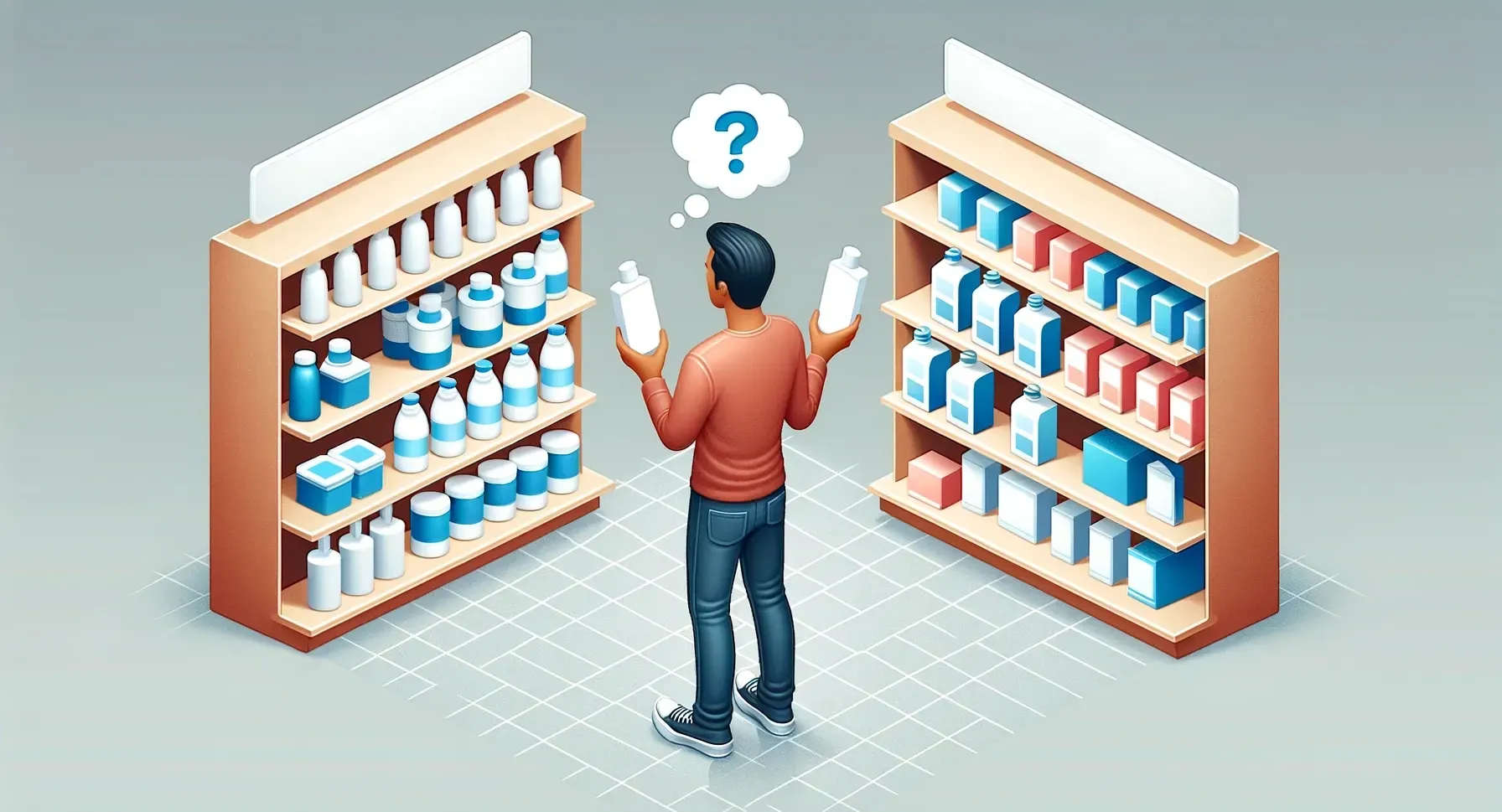- J: Judging the situation to create the right game plan for each customer
- O: Offering recommendations to simplify options for overwhelmed customers
- L: Limiting exploration addresses customer information overload
- T: Taking risks off the table by instilling buyer confidence and creating a safety net
Recent research confirms that customer indecision — not customer indifference — is a primary roadblock keeping B2B teams from meeting their sales and revenue targets. Customer indecision can cost companies millions of dollars in new revenue, but how can sales teams influence prospects to make up their minds? By implementing smarter, more strategic B2B digital marketing tactics designed to address prospects’ fear of messing up.
B2B Sales Strategy: FOMO? FOMU? WTF?
In the research phase of their 2022 book, “The JOLT Effect,” authors and business mythbusters Matthew Dixon and Ted McKenna analyzed more than 2.5 million sales-customer engagements. The duo had already identified that appealing to prospects’ FOMO — a tried-and-true approach that leverages fear, uncertainty, and doubt tactics to trigger the all-powerful Fear of Missing Out — was no longer working as an effective B2B sales strategy like it once had. But why?
In Dixon and McKenna’s study, they discovered that 56% of ‘no decision’ losses were a function of customer indecision. Comparatively, the other 44% stemmed from the customer’s preference for the status quo. Their findings suggested that customers are no longer worried about missing out: They’re more worried about making mistakes.
Dixon and McKenna coined this phenomenon “FOMU” — Fear of Messing Up — and built a four-stage framework based on their research to help B2B digital marketing professionals overcome FOMU-driven purchase indecision.

A New B2B Marketing Plan: JOLT Your Sales Cycle Back to Life
Dixon and McKenna’s JOLT method posits that the only way to successfully resolve indecision is to identify the root of the prospect’s FOMU and provide point-by-point solutions through a strategic B2B marketing plan.
The authors acknowledge that FOMU is a reaction to deeply personal fears and anxieties unique to each prospect and that many prospects don’t even have a conscious awareness that they’re struggling with FOMU to begin with. These elements make prospects understandably unlikely to discuss their indecision or the reasons behind it with sales representatives.
In the JOLT framework, Dixon and McKenna provide a foundation for marketers to bridge the decision gap, helping to identify and overcome customer FOMU and ultimately drive revenue.
The JOLT Method
J: Judging the situation
The first step in the JOLT method is to judge the situation, i.e. the degree of customer indecision. In this stage, marketers work closely with their sales teams, consultants and other major account resources to evaluate prospects based “not just on the customer’s ‘ability to buy’ but also on their “ability to decide,’” according to Dixon and McKenna. This includes discovery on the underlying beliefs, fears and anxieties that may be driving the prospect’s FOMU, and brainstorming strategies to address them.
Over time, marketers and sales reps will become adept at identifying patterns in prospects’ behavior and lack thereof, making it easier to quickly determine which prospects are good candidates for conversion further along in the sales cycle. Highly indecisive prospects, on the other hand, can be identified and disqualified early, allowing sales teams to move on to other, more promising accounts with greater efficiency.
O: Offering recommendations
Next, Dixon and McKenna suggest that the most successful path to conversion is one that cuts through the noise of the crowded marketplace by offering recommendations.
The authors make a distinction between “options” and “recommendations;” while multiple options can be helpful to prospects early in the sales process, they can become overwhelming as they grow closer to the critical decision-making point. Prospects freeze up, stuck ruminating on which option will be the most successful — and on all the ways each option could fail.
Instead, Dixon and McKenna found that by making recommendations, or “shifting gears from asking the customer what they want to buy to telling them what they should buy,” B2B marketers and sales teams can help prospects focus on the potential benefits of a solution and shake them out of analysis paralysis.
In this stage, B2B marketers can interface with product, sales and operations teams to simplify the options and build packages based on their discovery with the prospect and successful use cases. Marketers can contribute to the sales strategy by helping to crystallize the narrative around these recommendations, providing the structure and language sales teams need to guide prospects to the right choice.
This “quality over quantity” approach contradicts conventional wisdom, which taught that the key to closing deals was simply diagnosing the customer’s needs. But by taking the diagnostics a step further and providing expert recommendations — thereby narrowing the pool of options — Dixon and McKenna found that win rates more than doubled.
L: Limiting exploration
Now that your prospect has your expert recommendations and the strong proof to back them up, it’s time to stand your ground. Dixon and McKenna found that when reps continue to indulge the customer’s requests for additional information across the course of the sale, win rates are only in the 16% range. This is because the more information a prospect consumes, the less likely it becomes that they will find the satisfying answer they seek.
As marketers, we’re compelled to get in front of the client as often as possible. We’ll do anything to help make the sale, whether that means sending more emails, crafting more content or offering up new packages for consideration. Dixon and McKenna instead urge marketers and sales reps to fight our “more, more, more” impulse and double down on our recommendations.
By “[demonstrating] … expertise and credibility (for instance, by avoiding the temptation to introduce additional subject matter experts to the sales conversation and by anticipating and addressing unstated customer objections),” the high-performing sales reps in the authors’ study effectively curbed additional information requests and lead to win rates of more than 42%.
On the surface, this tactic may seem like inaction — should your team just make their recommendations, then put on their blinders and refuse to engage with customer requests? — but in practice, it’s anything but. Dixon and McKenna found that the most successful sales reps and teams limited exploration by
providing resources up front.
Remember, in the judgment phase of the JOLT method, we evaluated the prospect’s ability to decide and strategized around their FOMU. Now, marketing and sales teams can work together to proactively prevent superfluous exploration by compiling focused materials like simple tool kits, recommended reading lists, client success stories, etc. This tactic helps avoid overwhelming your prospect with information and demonstrates your value as a trusted, expert partner — one that understands their needs thoroughly enough to stand behind their initial recommendations.
T: Taking risk off the table
If the “L” phase of JOLT could be considered an exercise in sales confidence, the “T” phase takes it one step further. This stage is all about building buyer confidence through de-risking. FOMU is a state of heightened risk awareness, and Dixon and McKenna found that reps who address this by offering options for limiting downside risk more than doubled their conversion rates compared to reps who did not.
B2B marketers can help sales teams take risk off the table by collaborating on creative safety net options. These can be simple and straightforward, like basic opt-out clauses, or highly tailored to the client’s needs and anxieties, like contracts customized with specific services, incentives and clauses. In their research, Dixon and McKenna found that no matter what kind of safety net was offered, “all had the same effect: instilling buyer confidence in their decision and mitigating the outcome uncertainty that many customers feel before they sign on the dotted line.”

The Impact of a Full-Lifecycle B2B Marketing Plan
For many businesses, the biggest opportunity for sales growth is locked away behind the problem of customer indecision. As marketers, we can play a hugely influential role in unlocking indecision and boosting revenue by contributing throughout the entire customer lifecycle, not just lead generation. The JOLT method provides a proven B2B marketing strategy that puts indecision-busting front and center, encouraging strategies that challenge prospects’ comfort with the status quo and alleviate the anxieties that drive FOMU. By working together with sales teams to understand customer indecision and craft tailored solutions, B2B digital marketing professionals can support sales, drive revenue, and contribute to overall business success.
Reach out to your Dayta Pod to explore how we can help strategically support your sales team efforts and help you navigate customer indecision.





